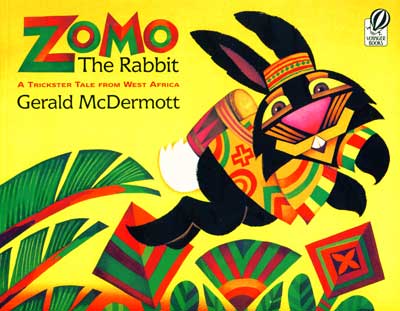 This study guide will be devoted to our Native American readings.
This study guide will be devoted to our Native American readings.We began the semester by looking at a number of trickster tales. See Prof. K.L. Nichols' site for a description of the trickster:
http://members.cox.net/academia/coyote.html#introduction
Librarian, music teacher, and children's author S.E. Schlosser's site has more of a definition:
http://www.americanfolklore.net/tricksters.html
Note that the trickster is not limited to Native American literature, but in EN 211, we will focus on the Native American tricksters: Coyote (S.W. & N.W. America), Raven (N.W. America as far as Alaska!), and Rabbit (S.E. America).
 We discussed the following stories about Coyote.
We discussed the following stories about Coyote.Here is a link to "Coyote and Bull," a story from the Nez Perce tribe.
http://www.ucan-online.org/
"The Origin of Eternal Death" is also known by the Wishram as "Coyote and Eagle go to the Land of the Dead"
http://www.native-languages.
In this story from the Shoshone, Wolf tricks Coyote:
http://www.shoshoneindian.com/
Is the Native American Coyote like Looney Tunes' Coyote? Or are they quite different?
http://www.youtube.com/watch?v=kvgADFXHajs
http://www.youtube.com/watch?v=TYTWnjFqTDk
Or is Bugs Bunny Looney Tunes' Trickster?
http://www.youtube.com/watch?v=PvXEElJFR6g

The Raven above comes from the Tlingit, but the story ("Raven and His Grandmother") that we read comes from the Aleut:
http://www.ilhawaii.net/~

The picture above is from a retelling of an African story.
Closer to us geographically is "Rabbit and Fox," an Iroquois story:
http://www.ilhawaii.net/~
"How Rabbit Brought Fire to the People" is a Creek story:
http://www.ilhawaii.net/~
We also discussed orality, the features of stories (and other discourse) that arise when a culture has no written language. These features may include reliance on performance and key phrases, episodic qualities, flat characters who act rather than reflect, and a flexible, pragmatic past. See this link for Art Bingham's review of Father Walter J. Ong's Orality and Literacy: http://www.engl.niu.edu/wac/ong_rvw.html If you are going to continue with literary studies, I hope that you will be able to read Fr. Ong's book someday!
See this link from the Milwaukee Public Museum for more information about oral tradition, specifically in Native American cultures:
http://www.mpm.edu/WIRP/ICW-14.html

Then we moved on to the creation myth. The first group of readings were "The Origins of Folk Stories," a Seneca (upstate NY) story, and "How the World Was Made," a Cherokee creation myth. (The picture above is a sketch of a Seneca longhouse, which I found at SUNY Geneseo's Rochester Young Scholars Academy. For more information, you may go to this page on longhouses in general: http://scott.k12.va.us/martha2/longhouses.htm . It is by Martha Vermillion, a teacher of Virginia history in Scott County.)
We also watched some videos of storytellers:
First is the video of Len Cabral:
http://www.youtube.com/watch?
See this link for DZApache's video of "How Coyote Got His Cunning":
http://www.youtube.com/watch?
You may also enjoy this production of "Coyote and Horned Toad" from a middle school in Arizona:
http://www.youtube.com/watch?
We also watched the following videos from Joseph Campbell's The Power of Myth:
http://vids.myspace.com/index.cfm?fuseaction=vids.individual&VideoID=58586975
http://vids.myspace.com/index.cfm?fuseaction=vids.individual&videoid=58587247
 The basket above is an Akimel O'odham basket that New Mexico's Wheelwright Museum of the American Indian auctioned off recently.
The basket above is an Akimel O'odham basket that New Mexico's Wheelwright Museum of the American Indian auctioned off recently.The next group of readings were the Akimel O'odham's "The Story of the Creation" and the Seneca story of "The Woman Who Fell From the Sky." Since "The Woman Who Fell From the Sky" is not in our book, see this link to read it:
http://www.indianlegend.com/
We also discussed the following essay by N. Scott Momaday, a Native American novelist: "The Becoming of the Native Man in America before Columbus." Momaday is a member of the Kiowa people. Below is an early 20th c. painting by a Kiowa.
 See this link for more background on the various Native American peoples:
See this link for more background on the various Native American peoples:http://worldlit2.multiply.com/journal/item/125/Native_American_Folktales_Background>Native American Folktales (Background)
No comments:
Post a Comment